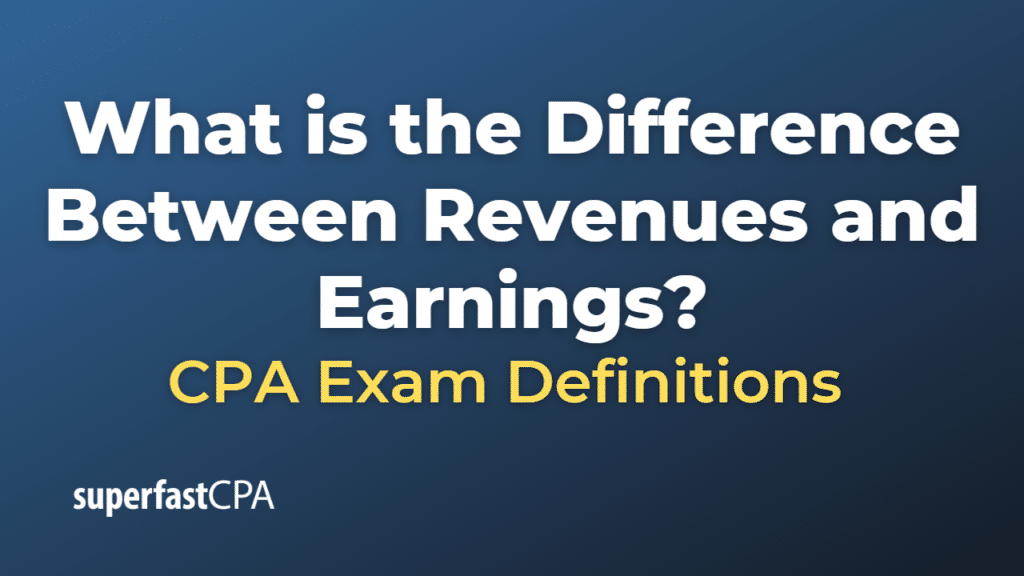Difference Between Revenues and Earnings
“Revenues” and “earnings” are both terms used to describe money that a company brings in, but they represent different concepts in accounting and financial reporting.
- Revenues:
Revenues, also known as sales, represent the total amount of money a company generates from its business activities before any expenses are deducted. For a company that sells goods or services, this would typically be the income received from customers.
Revenue is reported at the top of the income statement and is often broken down into categories like operating revenue (income from a company’s main business activities) and non-operating revenue (income from side activities, such as interest earned on investments). - Earnings:
Earnings, also known as net income or net profit, is the amount of money that remains after all business expenses have been deducted from revenue. This includes costs such as cost of goods sold (COGS), operating expenses, interest expenses, taxes, and more.
Earnings is found at the bottom of the income statement, hence the phrase “bottom line.” It represents the company’s actual profit after all costs associated with doing business are taken into account.
In summary, revenue is the total income generated by a company’s activities, while earnings are what’s left of that income after all business expenses have been paid. Earnings is a clearer indicator of a company’s profitability, as it takes into account the costs of generating revenue.
Example of the Difference Between Revenues and Earnings
Let’s consider a hypothetical example to illustrate the difference between revenues and earnings:
Suppose TechMaster Inc., a technology manufacturing company, reported the following figures on its income statement for the fiscal year:
- Total Revenues (from selling products): $1,000,000
- Cost of Goods Sold (COGS): $400,000
- Operating Expenses (salaries, rent, utilities, etc.): $300,000
- Interest Expenses: $50,000
- Taxes: $50,000
To calculate the company’s earnings (net income), we would subtract all the costs (expenses) from the total revenue:
$1,000,000 (Revenue) – $400,000 (COGS) – $300,000 (Operating Expenses) – $50,000 (Interest Expenses) – $50,000 (Taxes) = $200,000
So, TechMaster Inc.’s revenues for the year are $1,000,000, but after all expenses are deducted, its earnings are $200,000. These earnings represent the company’s net profit—the “bottom line”—which can then be reinvested in the business or distributed to shareholders as dividends.
This example illustrates how revenues and earnings represent different stages of financial performance: revenue shows the total income generated, while earnings show what remains as profit after accounting for all costs of doing business.













